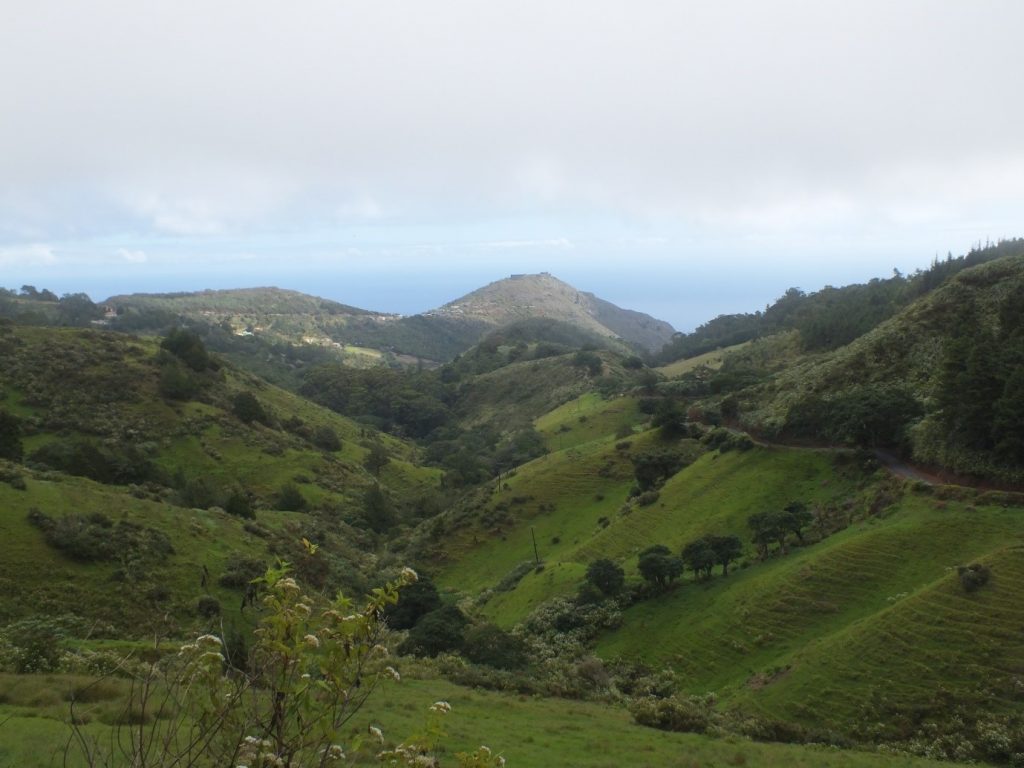It was a long 5 days transit to St Helena, dealing with sea sickness and adjusting back to day time hours for a short period. But there is nothing like a sunny day at sea and we were very lucky to have quite a few of those during our travels. Whist in transit one of the things that struck me most was how the birds seemed to disappear as we transitioned to the warmer, more tropical climate. The Albatross that I had gotten so used to seeing through the window and from the back deck from the moment we left the Falklands Islands were nowhere to be seen as we reached St Helena. Instead we were treated to terns and tropic birds.

Before the work began some of the CEFAS team disembarked while others including researchers and biologists from St Helena arrived. There was a new bustle to the ship along with the new faces and everyone quickly got stuck in to their work. It was lucky that I had prefilled and prelabelled so many tubes because the diversity of the catch brought up from the waters on and around the sea mounts at St Helena was much greater than that seen at Tristan Da Cunha. There were far more fish species for James Maclaine, the fish curator from the NHM, to identify. He definitely had his work cut out for him.

With the diverse catch and having lost some of the team when they disembarked at St Helena, we were very grateful for the hard work and good spirits brought by the St Helena scientists. They eased into the work effortlessly and were so efficient, it is hard to imagine how we would have fared without them. More species meant many more excited ooh’s and aah’s when someone found something interesting, saw an interesting feature under the microscope or simply couldn’t believe how brightly coloured the Hammerjaw was or how intricate the lure of the angler fish was.
A diverse catch meant a lot of samples to take so I also had my work cut out for me. The stream of animals being passed to my bench seemed endless and at the end of the 12-hour shift we were all happy to store the last specimen of the night and head up to the mess for a cooked breakfast. I collected over 1000 samples during the 8 days we were trawling in St Helena waters. All are currently stowed in the -80 ̊C freezer along with the Tristan Da Cunha samples. They will remain there until the ship docks in Southampton in mid-May (the first time the ship has made port in the UK in about 2 years!). We will then collect and transport them to the Molecular Collections Facility in the Natural History Museum, one of the CryoArks hubs. There they will be stored in perpetuity for any researcher wishing to access.

We are now in transit to Namibia where we will disembark and make our way home to the UK. When I said yes to going on the voyage, one of the things that concerned me was that it would be a 48-day trip in total, 42 days aboard ship and only 2 shore days once aboard. That is a long time to work intensively with a group of people you have never met. Thankfully everyone has been lovely. The BAS and CEFAS teams have been a pleasure to be around and easy to work with. It is wonderful to be coming home with not only some great memories and new friends but over 2000 samples to add to the CryoArks Biobank.


